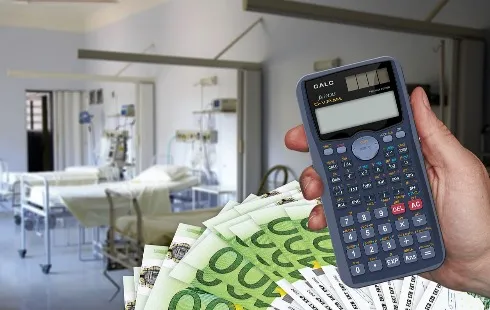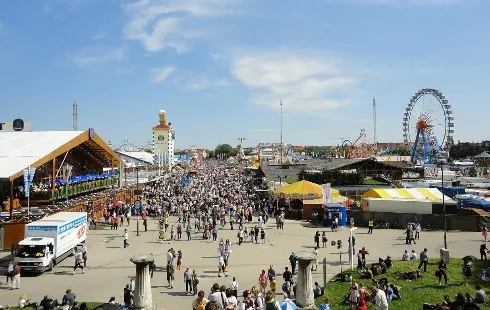
8HoursMining cloud mining platform, daily profits up to $9,337
Section: Business
Paul Stenning takes an in-depth look at Germany's medal prospects in the Olympic Tennis competition.
Perhaps more than any other Olympic event in recent times, the 2012 Olympics in London carries more weight in the tennis world. The reason for this is most likely due to the highly prestigious venue the world's best players will be serving up their wares within. It does not come any better than Wimbledon, and even though the final of the Men's and Women's Grand Slam event at this venue was held just three weeks ago, there is new motivation given the prizes at stake.There is also a different dynamic to the Wimbledon tournament in that male players are not under the 'Best of Five Sets' pressure and endurance. In the Olympics the men only need win two sets to advance to the next round.
This would have given Augsburg's Philipp Kohlschreiber a terrific chance on arguably his best surface: grass. He made the quarter finals of Wimbledon for the first time this July and has been in good form all year, broaching the World's Top 20 just this week as he made the final on the clay of Kitzbuhel. Clearly tired after his recent heroics on court, Kohlschreiber went down in three sets to Robin Haase. And to add insult to injury, Kohlschreiber had to pull out of the Olympics with a foot problem.
Phillip Petzschner is therefore Germany's only medal hope in the men's tennis event but he has a much tougher draw, despite easily dismissing Lukas Lacko of Slovakia on Saturday. Petzschner faces Janko Tipsarevic of Serbia next, before likely facing John Isner in the following round.
In the women's event Mona Barthel has already been knocked out courtesy of Poland's Urszula Radwanska so it is left to Julia Goerges, Sabine Lisicki and Angelique Kerber to carry German hopes at Wimbledon. Goerges caused an upset on Sunday by defeating Urszula's more competent sister Agnieszka, the losing Wimbledon finalist earlier this month.
Lisicki has a decent draw and might first face a daunting challenge in the quarters where she could meet Maria Sharapova. The attractive 22-year-old from Troisdorf was expected to lose to Sharapova at Wimbledon - also in the quarter-final stage - yet dismissed her opponent in straight sets.
Hopes might be higher still for Angelique Kerber. With the Olympics defined by patriotic passion, Kerber's natural effervescence and determination will hold her in good stead. She has an excellent 45-13 record this season and knocked Lisicki out of Wimbledon before valiantly losing to eventual finalist Radwanska in the semi-finals. Though Kerber - who is based in Kiel in northern Germany - is solid on all surfaces, she seems to excel particularly on grass, where her passion and aggression suits the fast pace of the ball. There are many untested players in her section of the draw and her biggest fear might be the tour's chief squealer Victoria Azarenka. They played each other only once before, earlier this year at Indian Wells, with Azarenka prevailing in straight sets. The six-footer from Belarus is used to winning and currently stands as the best player in the world though Kerber will clearly not be fazed and will doubtless relish representing her country. She has been practising diligently at home for the last three weeks in preparation for her Olympic debut.
Lisicki and Kerber will also team up to form a strong partnership in the Ladies Doubles. The Williams sisters (Venus & Serena) are lurking in the same half of the draw, so perhaps the Germans would be wise to concentrate their efforts on the singles.

Section: Business

Section: Arts

Section: Politics

Section: Health Insurance

Section: News

Section: News

Section: News

Section: Arts

Section: News

Section: Arts
Health Insurance in Germany is compulsory and sometimes complicated, not to mention expensive. As an expat, you are required to navigate this landscape within weeks of arriving, so check our FAQ on PKV. For our guide on resources and access to agents who can give you a competitive quote, try our PKV Cost comparison tool.
Germany is famous for its medical expertise and extensive number of hospitals and clinics. See this comprehensive directory of hospitals and clinics across the country, complete with links to their websites, addresses, contact info, and specializations/services.
Frisch mit dem Amadeus Austrian Music Award ausgezeichnet, meldet sich OSKA mit neuer Musik und neuen Tourdaten zurück. Ihr zweites Album ,,Refined Believer" erscheint am 20. Juni 2025 und zeigt sie persönlicher und facettenreicher denn je. Noch in diesem Jahr geht sie solo auf Tour, bevor sie...



No comments yet. Be the first to comment!